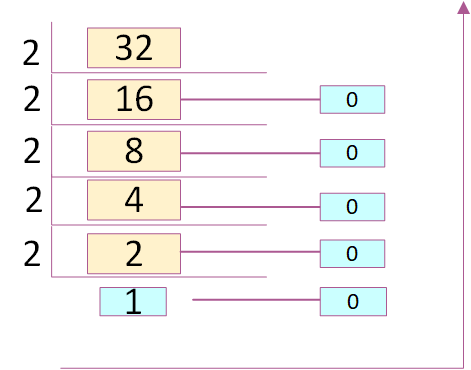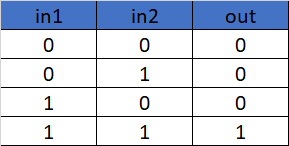Number system
Introduction
The System which is used to represent the numbers is called as number system. In Digital systems, there are different types of number system which would be used for the representation of the information. The machine understandable binary system is also one of them. There are different types of number systems based on their base/radix. Base or radix of the number system is the total number of symbols used in that number system.
For example, Decimal will have 10 symbols as 0,1,......9.
Types of Number system
Below are the most common types of the number systems which are used in the digital electronics.
- Decimal
- Binary
- Octal
- Hexa-Decimal
Decimal
The numbers in the decimal number system has a base/radix of 10. The symbols in the decimal number systems are 0,1,2,3,4,5,6,7,8 and 9. This is the number system which we are using in or daily life. Each position in the number system will represent the power of "10".
For example,
(1987)10 => (7 x 100) + (8 x 101) + (9 x 102) + (1 x 103)
Binary
The numbers in the binary number system has a base/radix of 2. The symbols in the binary number systems are 0 and 1. This is the number system which is used in the digital systems. Each position in the number system will represent the power of "2".
For example,
(1011)2 => (1 x 20) + (1 x 21) + (0 x 22) + (1 x 23) => (11)10
Octal
The numbers in the octal number system has a base/radix of 8. The symbols in the octal number systems are 0,1,2,3,4,5,6 and 7. Each position in the number system will represent the power of "8".
3 Bits are required to represent the number in the each position of octal number system.
For example,
(7024)8 => (4 x 80) + (2 x 81) + (0 x 82) + (7 x 83) => (3604)10
Hexa-Decimal
The numbers in the Hexa-decimal number system has a base/radix of 16. The symbols in the hexa-decimal number systems are 0,1,2,3,4,5,6,7,8,9,A,B,C,D,E and F. Each position in the number system will represent the power of "16".
4 Bits are enough to represent the number in the hexa decimal number system.
For example,
(7A24)16 => (4 x 160) + (2 x 161) + (A x 162) + (7 x 163) => (31268)10
Conversion
Any number system To Decimal
To convert any number system to decimal number system,
(A3A2A1A0)n => [(A0 x n0) + (A1 x n1) + (A2 x n2) + (A3 x n3)]10
Example,
Binary to Decimal : (1011)2 => (1 x 20) + (1 x 21) + (0 x 22) + (1 x 23) => (11)10
Octal to Decimal : (7024)8 => (4 x 80) + (2 x 81) + (0 x 82) + (7 x 83) => (3604)10
Hexa-Decimal to Binary : (7A24)16 => (4 x 160) + (2 x 161) + (A x 162) + (7 x 163) => (31268)10
Decimal to Any number system
Decimal to Binary
Procedure to convert the decimal number into binary,
Step 1: Divide
the given decimal number by "2".
Step 2: Keep both remainder and quotient.
Step 3: Repeat step1 and 2, until you get "1" as quotient.
Step 4 : Keeping last quotient as MSB and all the remainders in bottom to top order, the required
binary number will be obtained.
Example,
(32)10 => Binary
Decimal to Octal
Procedure to convert the decimal number into Octal,
Step 1: Divide the given decimal number by "8".
Step 2: Keep both remainder and quotient.
Step 3: Repeat step1 and 2, until you get 1,2,3,4,5,6 or 7 as quotient.
Step 4 : Keeping last quotient as MSB and all the remainders in bottom to top order, the required octal number will be obtained.
Example,
(64)10 => Octal
Decimal to Hexa-Decimal
Procedure to convert the decimal number into Hexa-Decimal,
Step 1: Divide the given decimal number by "16".
Step 2: Keep both remainder[in the form of hexa-decimal] and quotient.
Step 3: Repeat step1 and 2, until you get 1,2,3,4,5,6,7,8,9,A,B,C,D or E as quotient.
Step 4 : Keeping last quotient as MSB and all the remainders in bottom to top order, the required octal number will be obtained.
Example,
(64)10 => Hexa-decimal
Binary to Octal/Hexa-Decimal
Binary to Octal
3 Bits are required to represent the number in the each position of octal number system. So we can simply convert binary to octal by collating each 3 bits starting from LSB.
Example,
(1110101110001)2 =>
(1 110 101 110 001)2 = (16561)8
Binary to Hexa-Decimal
4 Bits are required to represent the number in the each position of hexa-decimal number system. So we can simply convert binary to hexa-decimal by collating each 4 bits starting from LSB.
Example,
(1110101110001)2 =>
(1 1101 0111 0001)2 = (1D71)16
Octal/Hexa-Decimal to Binary
Octal to Binary
We could simply convert each digit in the octal number to 3 bits[binary].
Example,
(16561)8 =>
(16561)8 = (001 110 101 110 001)2
Binary to Hexa-Decimal
We could simply convert each digit in the hexa-decimal number to 4 bits[binary].
Example,
(1D71)16 =>
(1D71)16 = (0001 1101 0111 0001)2
Conversion Table
































